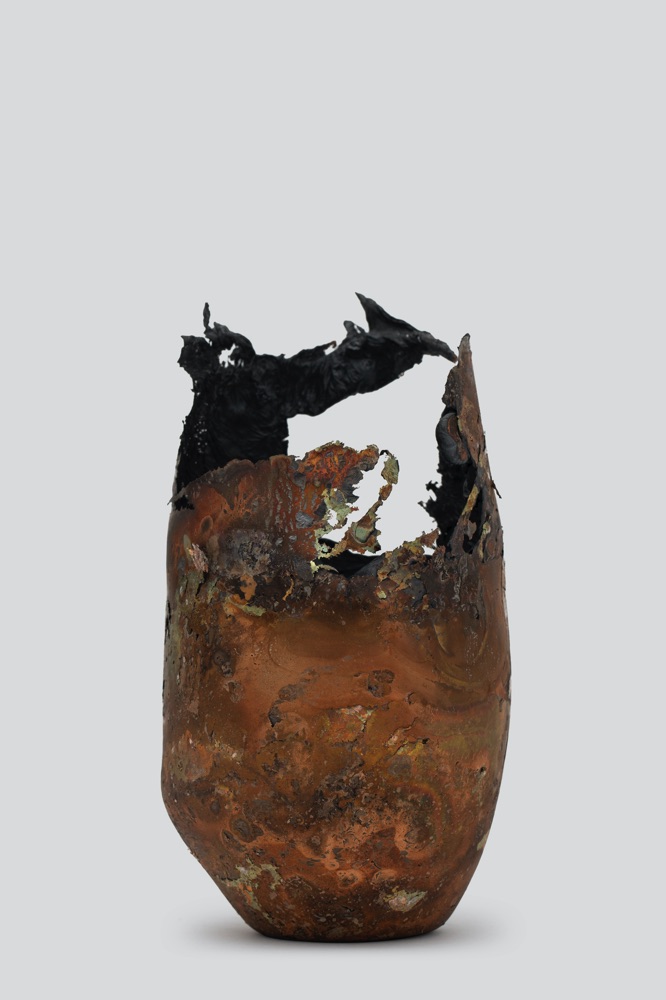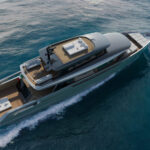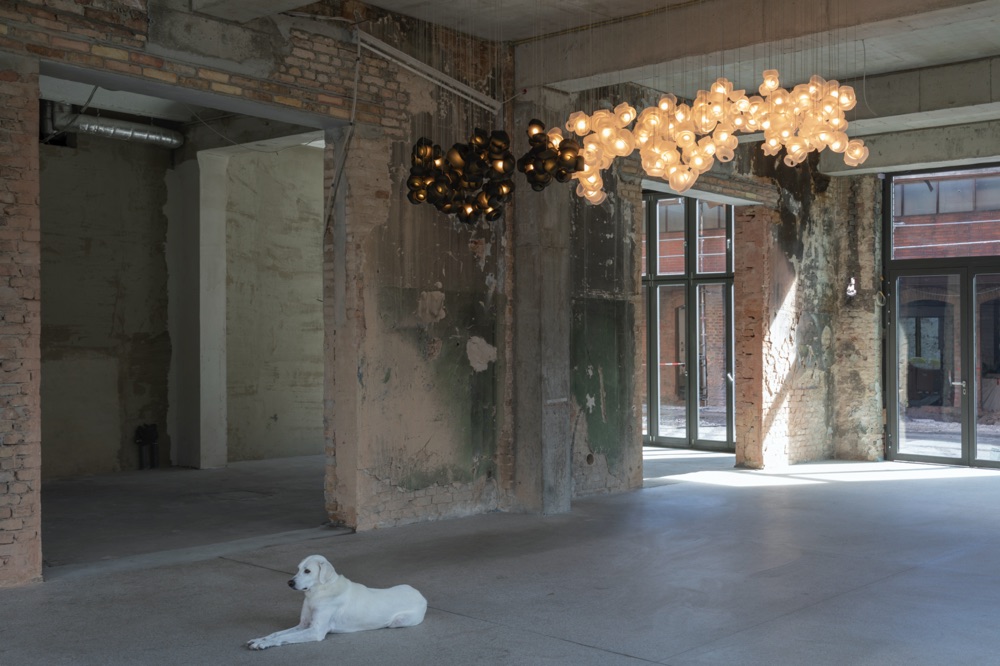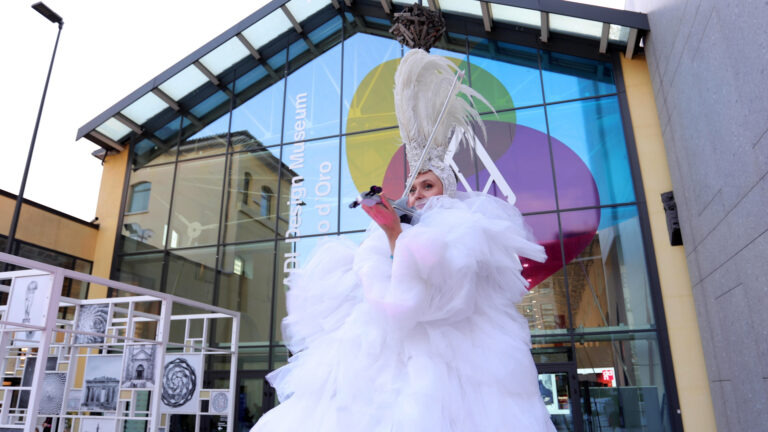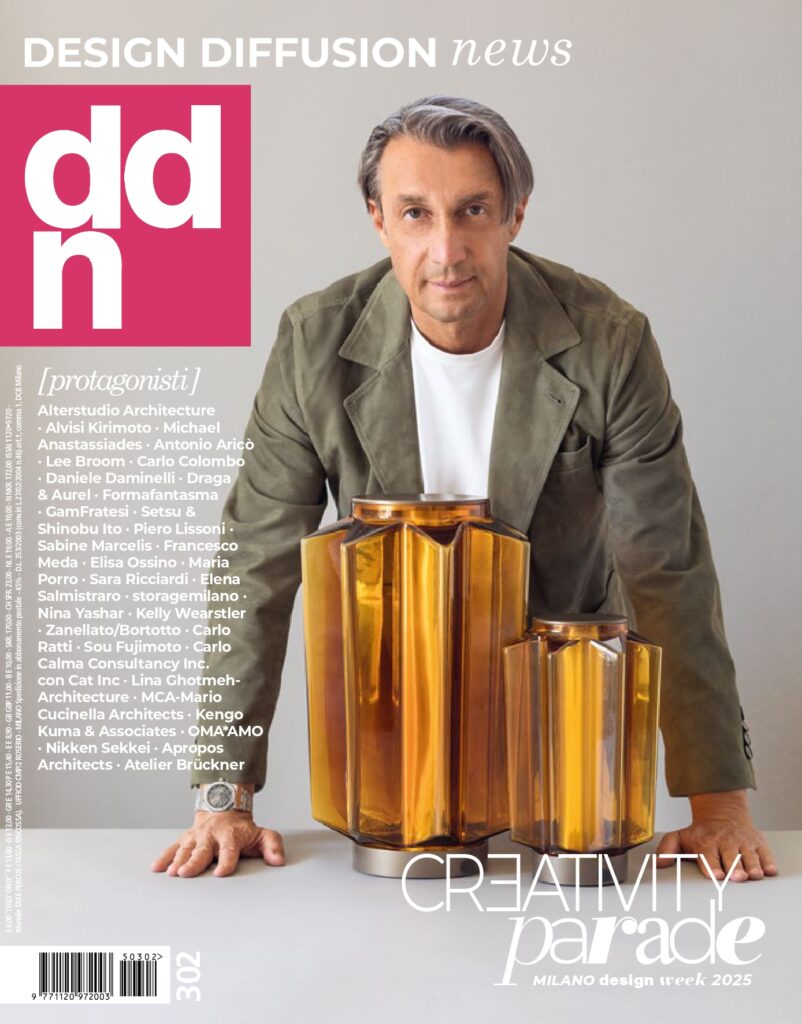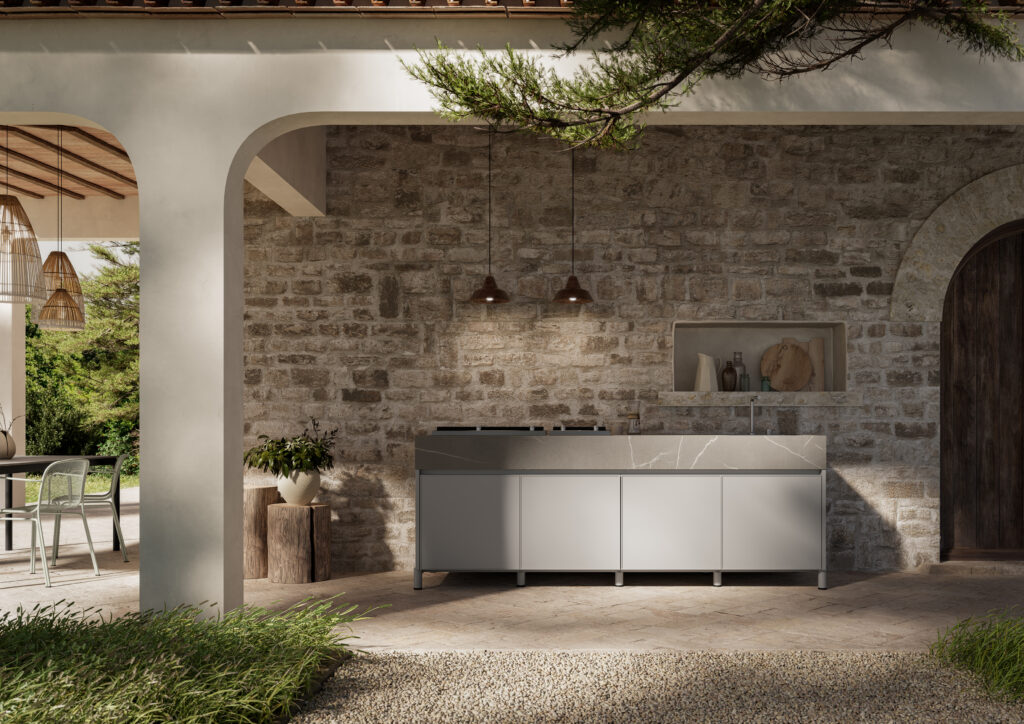Omer Arbel: light, architecture, technology and new materials
Omer Arbel is a Canadian architect, designer, artist, entrepreneur. A multifaceted personality, who has led several activities, some of which are very successful at an international level. In 2005, he founded, as art director, Bocci, a lighting brand that in a very short time has carved a niche out for itself in the international panorama of lighting design. Alongside Bocci, Arbel has cultivated his passion for architecture with the same approach that characterizes his design products.
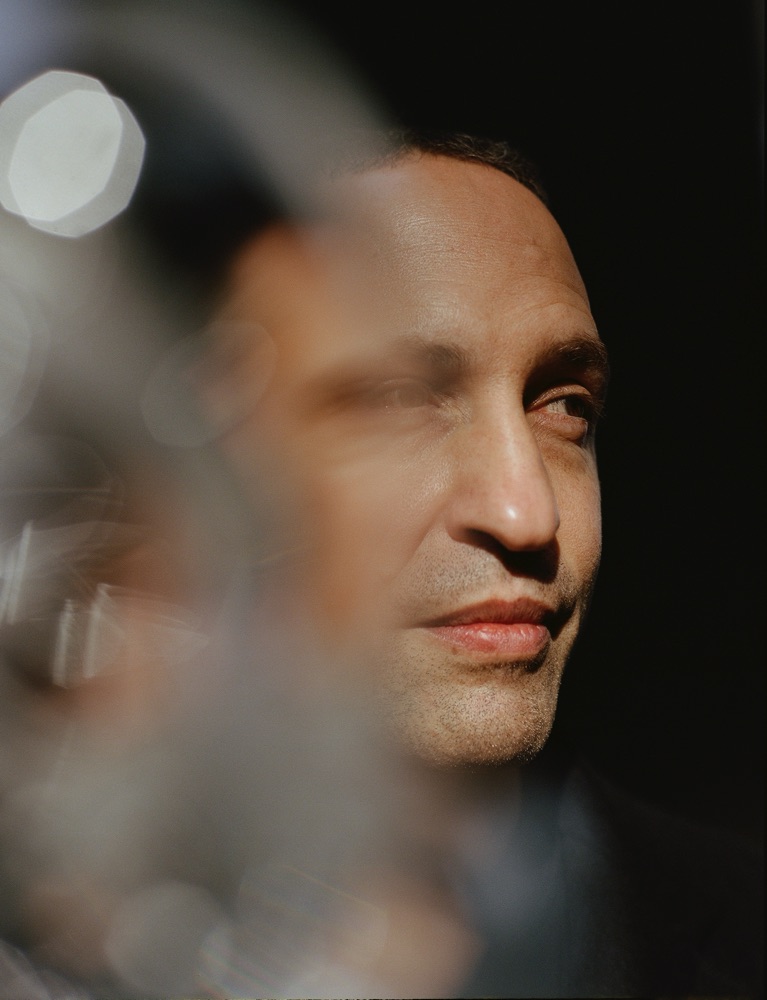
With Bocci, Omer Arbel has started a company that, over time, has specialized in making lights with innovative materials and processes. Thanks to advanced technology, Bocci lamps are both innovative and poetic, making it possible to create enchanted landscapes in the interiors they decorate.
Innovative materials and research lead to innovative products
Omer Arbel explains: “When we work on a production process, technological and practical considerations overlap with what we call the discovery of a material. Sometimes, during an experiment, something unexpected happens that is difficult to put into words, and we fall in love with the result. After that, we apply professional practice to explore the development of any transcendent quality that may have emerged, and then we make something real, which can actually work, applied to a product.”
The results of this philosophy are the Bocci collections, highly innovative glass creations with a look that is always surprising. The protagonist of these collections is glass – blown, worked, manipulated to get an aspect that varies considerably depending on the processing method.
Read our interview with Daan Roosegaarde
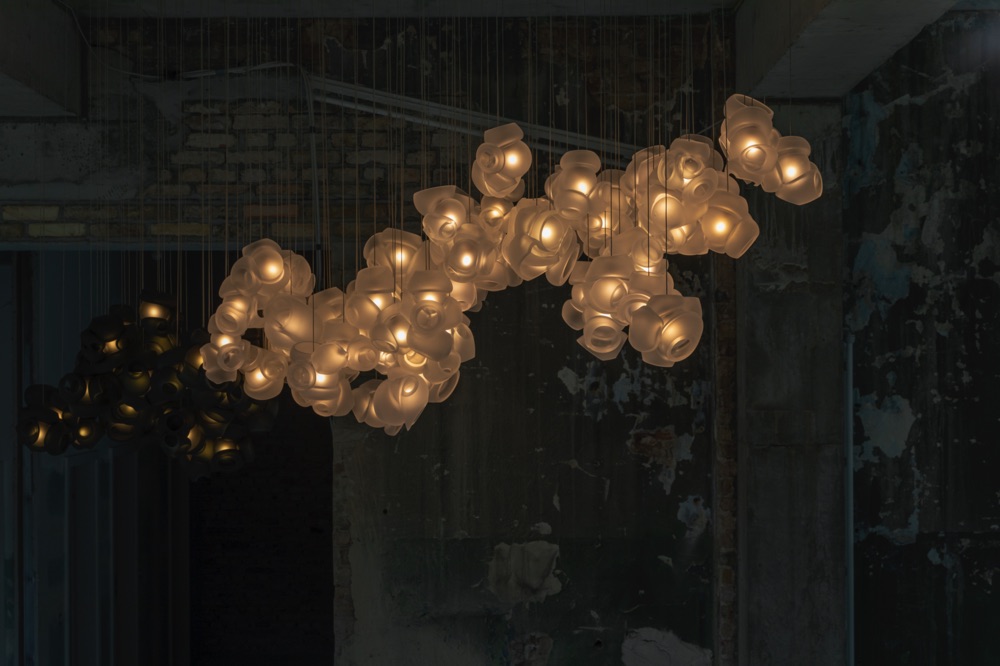
Bocci collections
For example, the 73 series results from blowing liquid glass into a folded and highly heat-resistant ceramic fabric vessel. The resulting shape seems to reproduce a fabric volume, which becomes rigid as it cools. This volume contains a xenon or LED lamp that diffuses light, accentuating the pleats of glass. The resulting product is a lamp with a rounded shape flattened in the center, which lives well on its own or in clusters of pendant lamps, or as a floor lamp.
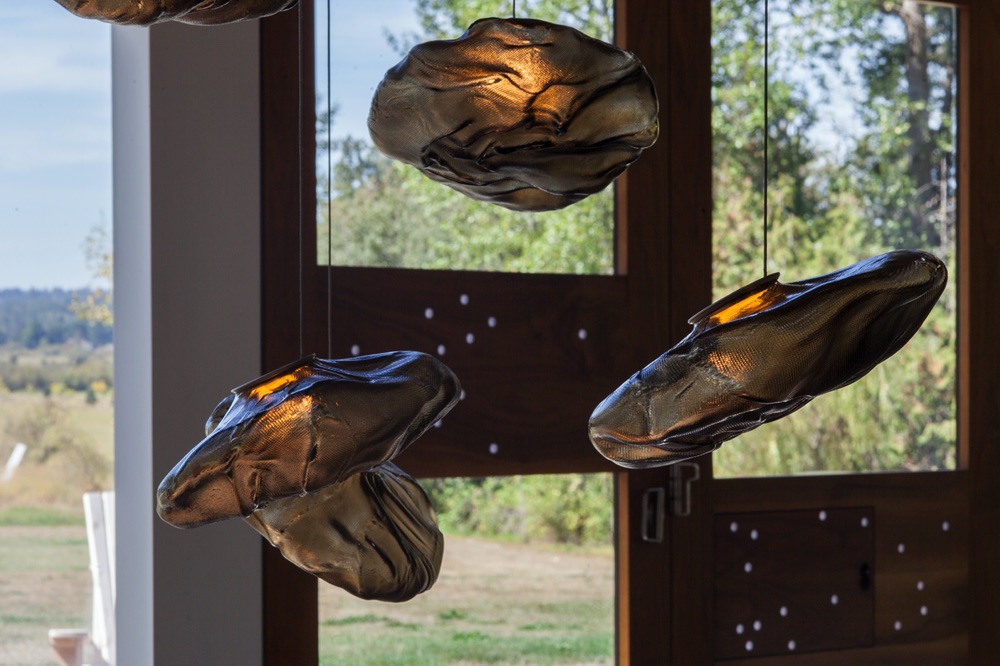
Also 28 results from an innovative fabrication process, which manipulates both the temperature and the direction of air flow into blown glass. The result is a slightly distorted sphere with an interior landscape of satellite shapes, including an opaque milk glass diffuser that houses either a low-voltage xenon or LED lamp.
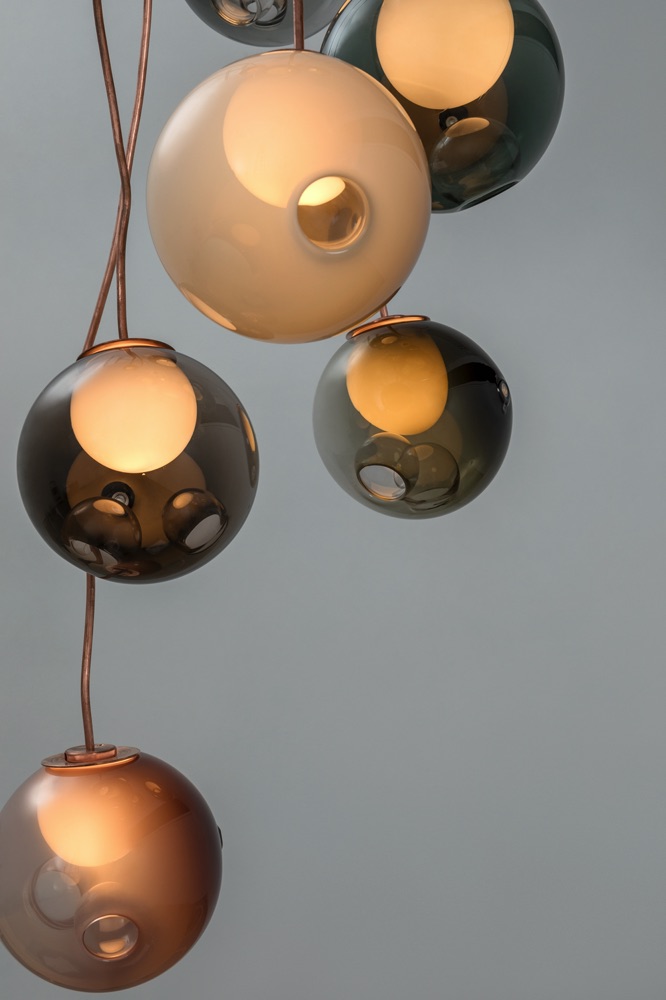
Sustainability means making durable products
The 87 series, made with a manufacturing process that employs soda water, is definitely out of the ordinary. Soda water is used to trap air in a super-heated glass matrix, which is vertically stretched and folded back onto itself numerous times. As the glass cools, the folding motion along the grain of the loop turns the entrapped air into microfilaments that give the piece a pearlescent optical quality. A low-voltage xenon or LED light source is introduced at one end of the loop casting light through the microfilaments and diffusing a delicate light. A series of lamps from the 87 collection in succession creates an enchanted environment, inhabited by little ghosts.
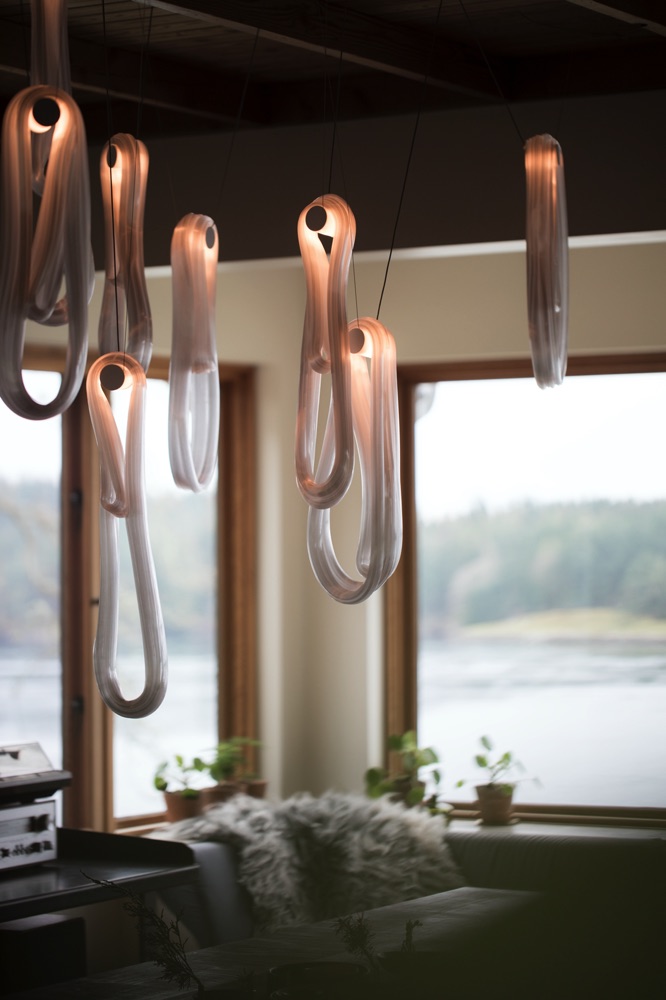
“Glass has many advantages – Arbel continues. Sustainability is a given, of course; glass is a sustainable, natural material, and we try to use sustainable materials for all parts of our products, just as we always try to use energy from sustainable sources. But the real sustainability of our products lies in their durability. We make products that last over time and can be repaired; we aim to create works that will never be thrown away, but can be restored and gain value over time. This means producing less. For me, this is true sustainability: producing less but better.”
Architecture is a roommate
Omer Arbel is a designer, an artist and an architect. And he is keen to specify: “…There are no activities that I prefer, and I don’t feel more of a designer, or architect, or artist. I apply my creativity to a complex of applied arts, and this creativity sometimes gives shape to a design product, sometimes to a work of art, sometimes to a work of architecture. I like to think of architecture as a ‘living’ thing: I find it interesting to live in an environment that is populated also by some weird elements that are a bit disturbing, not exactly defined.”
A statement that becomes immediately clear if we examine the 75.9 house, awarded at the World Architecture Festival 2019 in the Future Projects category. In this project, Omer Arbel uses reinforced concrete as a structural and decorative element at once, creating an appearance that is light and solid at the same time. The columns, inspired by magnolia trees, will house real magnolias at the top, realizing the fusion of artificial and natural elements.
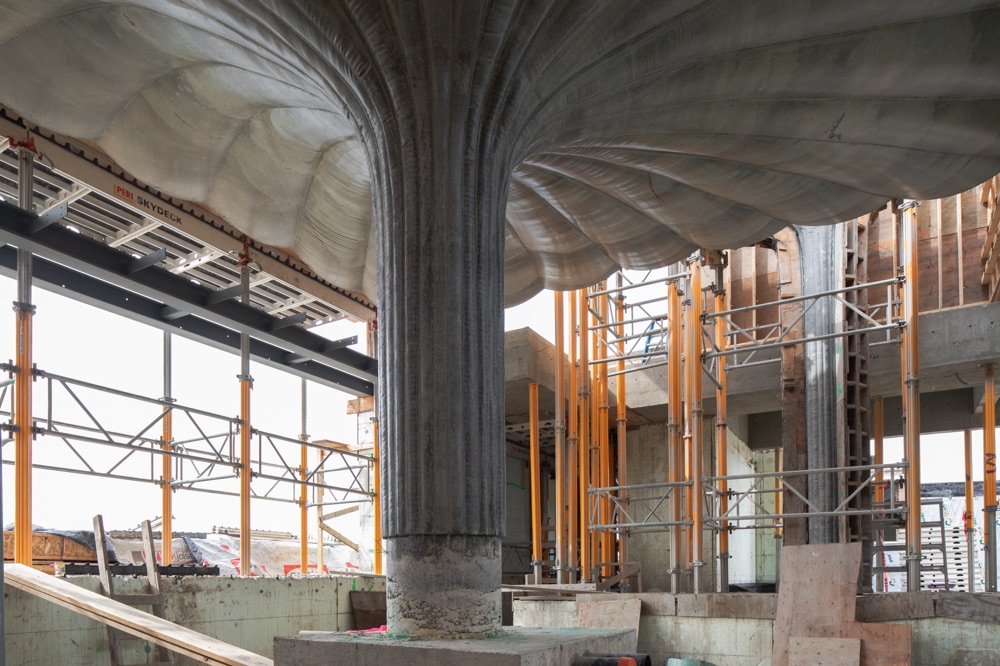
Architecture and sustainability
Research into sustainable materials and construction processes characterizes all of Omer Arbel’s architecture. Not only that, in his buildings, generally located in harsh places, nature plays a leading role, becoming the real protagonist of the spaces.
For example, 23.2 (a project from 2010) is a house for a family built on an hourglass-shaped rural acreage defined by two masses of forest that form two distinct ‘outdoor rooms’. The point of departure of the project was a depository of reclaimed, century-old Douglas Fir beams from the local forests of British Columbia. The beams, milled from a single tree, were of different lengths and cross-sectional dimensions – some as long as 20m, some as deep as 1m.
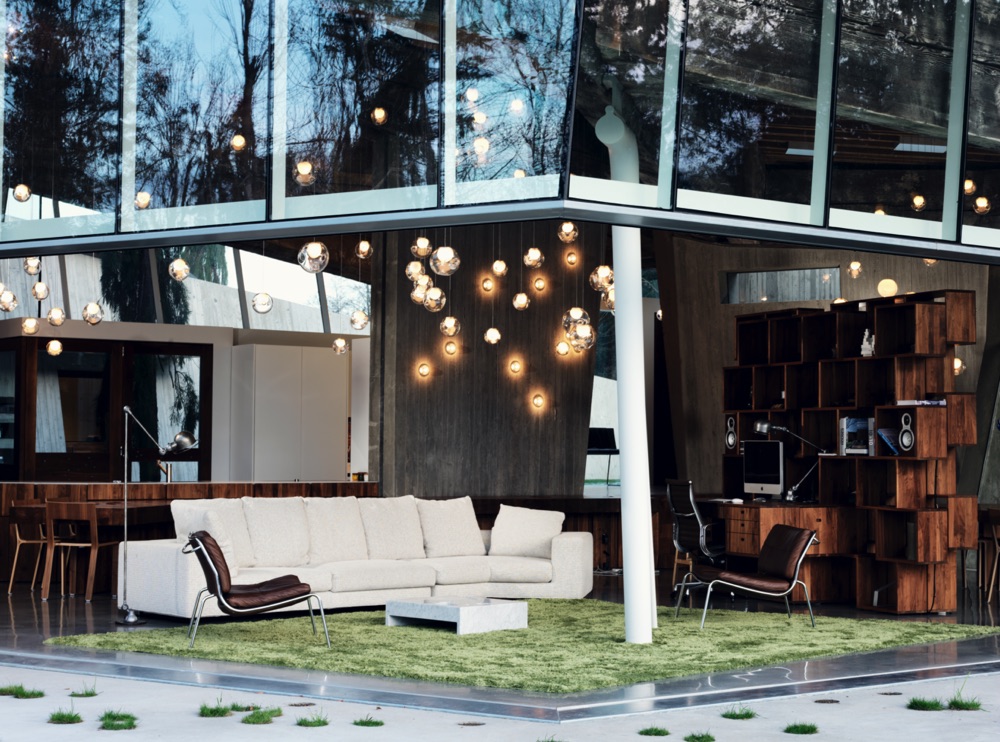
On the other hand, house 91 is a suspended bridge between two naturally occurring rocky ridges, spanning over a sunken fern gully. A path through the forest leads to a discreetly concealed entrance, set into the house volume. From there, the journey through the house goes on with the impression of being suspended high within the tree canopy and ends with arrival on solid ground again, on a beach facing the Pacific Ocean. The plan has a main wing, designed for the owners, and a second wing, used by guests only.
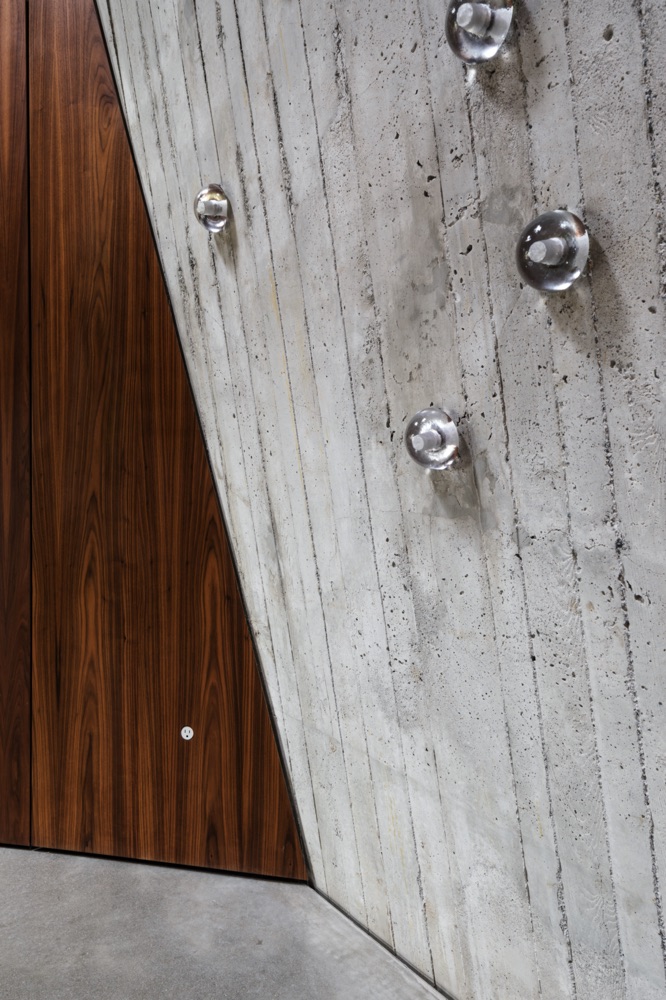
Sustainable architecture with waste from wood processing
The integration between construction and nature is the protagonist of 94.2, the first in a series of 16 residences on a clifftop site on the northern coast of the Pacific Ocean. The project makes use of waste product of the local logging industry; more specifically, cedar burl offcuts are tumbled to create boulder-shaped modules ranging in size from 150 to 350mm. These wood boulders are bundled in large baskets and used as void forms against which concrete is cast, creating the rooms and skylights of the residence.
On the other side, the interior walls retain the negative impression of their form. After the concrete cures, the petrified wood boulders are mounted to metal standoffs on the west façade, creating a cloud-like building envelope. Over time, mosses and lichens will grow on this ‘wooden skin’, creating a living and ever-changing veil. In contrast, the east façade of the house is buried by the forest, which grows and extends up over the roof. The final result will be the feeling of entering a cave, which, on the contrary, hangs over the edge of the cliff.
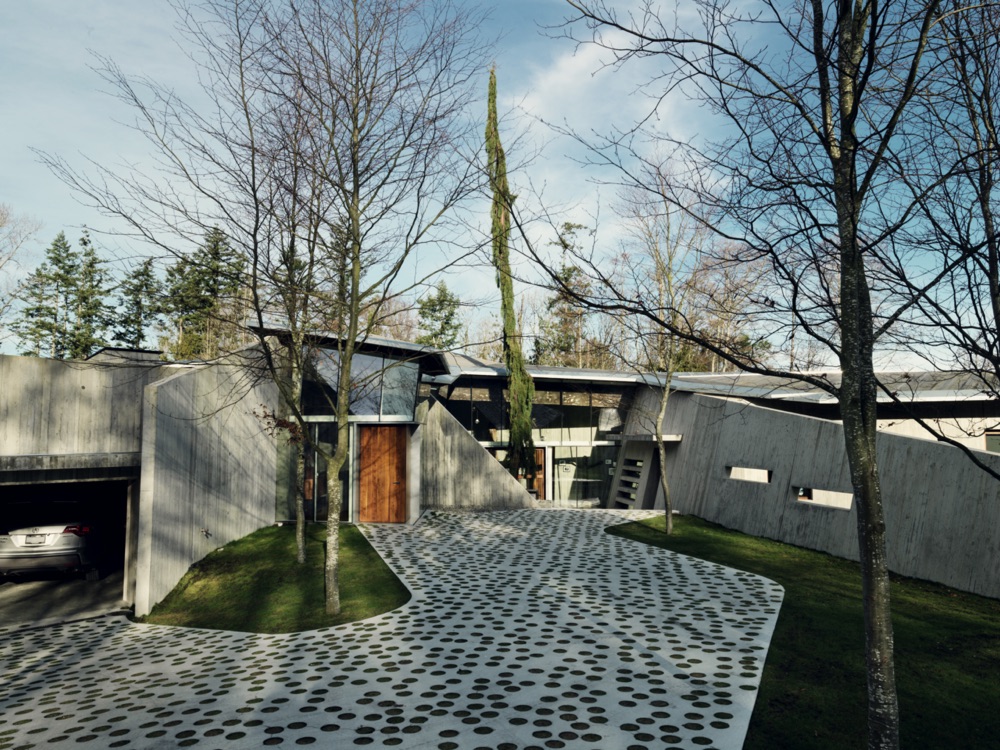
Art as a medium for experimentation
How do these innovative materials and processes come about? “There are no set patterns. You start by exploring the properties of a material and let the forms flow freely. In this way, you can achieve results like those obtained with glass. Now I am very inspired by other materials and techniques. Experiments with copper alloys and glass, which give life to objects with variable shapes, go in this direction.”
In the 113 series, consisting of freeform objects, a liquid copper alloy is poured into a blown glass form. When they come into contact, the glass shatters and the final result is an iridescent surface on the glass side, contrasting with a coarse oxidized surface on the inside. 64 is a series of candles obtained through a complex process involving ice and molten beeswax. A candle made of delicate wax filigree is cast into a protective cube of ice that is allowed to melt only once the candle has reached its final destination. Thus, the act of burning the candle becomes a part of its making and disintegration.
Omer Arbel’s intense work also adapts to modern times as shown by the 64 NFT collection, the natural complement to the 64 collection. “NFT seems to be the ideal solution to overcome the physical restraints of the 64 series. As it is extremely complicated to make and transport, selling it as a digital experience is a way to offer both the work and the conceptual idea,” concludes Omer Arbel.
